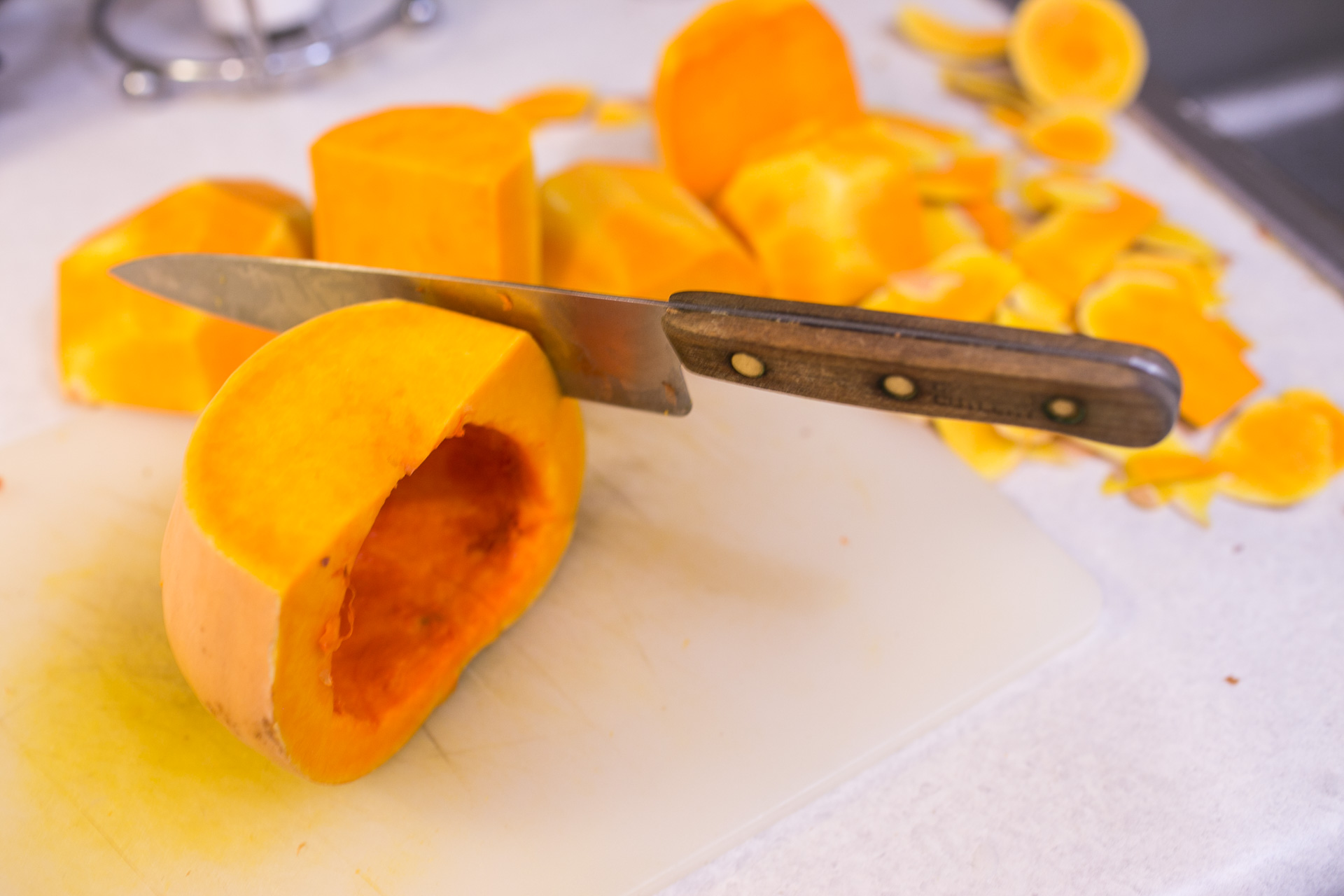
You can remove the stem easily by whacking it on the edge of a counter or with the back of a knife, which is much safer than cutting it off. Make sure you start with a good, sharp knife and flat edge when possible. This is the Butternut squash, and its leaves have a distinct velvety appearance, and are relatively easy to distinguish from the other squashes. To be complete, the other squash species, C. You can peel, cube, steam, and freeze it if you’re not going to eat it all at once, or just make a big pot of soup and then freeze that. But compare to the much more rounded leaf of Buttercup below. For example, butternut squash is rich in Vitamin C, integral in body tissue repair processes and protecting the immune system, while zucchini is rich in Vitamin B6, which aids in moderating.

Once cut, squash does go in the fridge, and cut squash has a very short shelf life of 3 – 5 days, so eat it up quickly once you start. They’re beautiful enough you can gaze at it a while before eating it! It’s ideal storage temperature is around 10*C, but as most people (including us) don’t have somewhere with that as a constant, having it warmer is preferable to cooler. Keep your squash in your kitchen, or a nice cozy room in your house. We cure ours for at least 3 weeks in the warm greenhouse before lugging it upstairs in the shed to store for winter. I’ve seen many farmers make the same mistake storing their squash crop in cold storage. When you store whole squash in the fridge or root cellar, it rots. Bred at Cornell University, Honeynut is a must-grow for me every year. They look like miniature butternut squash, weighing only a half pound to a pound each. Each adorable, personal-sized fruit is very sweet. That’s big and bold because it’s a very, very common mistake. Of all the mini winter squashes Honeynut (pictured above) is probably my favorite. Storage Tips: SQUASH DOES NOT GO IN THE FRIDGE!! Season: Winter Squash is ready in late August and goes until at least Christmas. Then there’s Spaghetti, in a class of it’s own (except if you decide to eat a Jack o Lantern pumpkin). The second category includes small ones like Acorn, Honeynut and Delicata, that you typically would just eat as a squash rather than using the flesh to bake or soup with because of the size and shape (because who wants to peel an acorn squash?!). They have dense, sweet, uniform flesh that is easily roasted or baked. These are your best choice for soups, pies, baking, etc. In the “Big Mushy Ones” category you’ll find Kabocha (Sunshine and Winter Sweet), Buttercup, Pie Pumpkins, and Pink Banana. Over time they become sweeter and less starchy, which means the flesh behaves differently when you cook it, depending on the season. Directly after harvest they are starchy and less sweet.

Big distinctions between varieties can’t be made because I’ve seen bigger differences within the same variety depending on what time in the season you eat it. It’s really just a big mature cucumber in different shapes!! (literally, they are in the same family!). In my mind, there are 3 types of squash: Big mushy ones for soup and baking, smaller specialty ones for roasting, and stringy Spaghetti Squash. I find that people tend to over complicate things when they talk about squash.


 0 kommentar(er)
0 kommentar(er)
